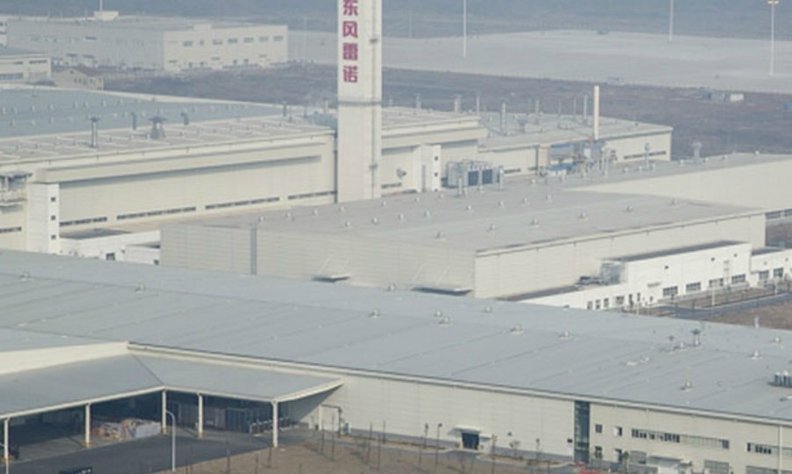FILE PHOTO: Renault Chairman Jean-Dominique Senard attends a Renault, Nissan and Mitsubishi chiefs’ joint news conference in Yokohama, Japan, March 12, 2019. REUTERS/Kim Kyung-Hoon/File Photo YOKOHAMA (Reuters) – The alliance between France’s Renault SA (RENA.PA) and Japan’s Nissan Motor Co (7201.T) remains strong, but its members share a sense of urgency, the alliance’s chairman said… Continue reading Renault chairman says alliance with Nissan strong, shares sense of urgency
Tag: Renault
Who buys Tesla in France?
Posted on Jan 30, 2020 at 12:00 p.m. Updated on Jan 30, 2020 at 12:36 p.m. Become in a few years the attraction of the world automotive scene, Tesla, which still thrilled the stock market on Thursday with its annual results , still has a relatively discreet presence in France. If sales remain far from… Continue reading Who buys Tesla in France?
Mitsubishi denies fraud in German probe over devices to beat emissions tests
FILE PHOTO: A man walks near Mitsubishi cars as he visits Tokyo Motor Show in Tokyo, Japan October 24, 2019. REUTERS/Soe Zeya Tun TOKYO (Reuters) – Mitsubishi Motors Corp (7211.T) said on Thursday there was no reason to believe it had committed fraud as suspected in a German investigation into the Japanese automaker over illegal… Continue reading Mitsubishi denies fraud in German probe over devices to beat emissions tests
Sweden’s AB Volvo plans big shareholder payout as profit beats
STOCKHOLM (Reuters) – Swedish truck maker AB Volvo (VOLVb.ST) reported a smaller than expected fall in fourth-quarter earnings in the face of slowing demand and announced plans on Thursday for a payout to shareholders that exceeded market expectations. FILE PHOTO: Volvo S90 is displayed at a panel discussion about self-driving cars at Diaoyutai State Guesthouse… Continue reading Sweden’s AB Volvo plans big shareholder payout as profit beats
Ford, Renault will reopen China plants on Feb. 10 – Automotive News Europe
January 29, 2020 04:35 AM Reuters {{ source.title }} {{title}} {{ abstract }} read more {{/main_image_url}} {{^main_image_url}} {{ source.title }} {{title}} {{ abstract }} read more {{/main_image_url}} {{/content}} ]]> Renault Renault’s Wuhan plant (pictured) will resume production on Feb. 10. Ford and Renault said they will resume production at their China factories after extended breaks… Continue reading Ford, Renault will reopen China plants on Feb. 10 – Automotive News Europe
Tokyo prosecutors search office of Carlos Ghosn’s former lawyer
TOKYO (Kyodo) — Tokyo prosecutors on Wednesday searched the office of a lawyer who used to represent Carlos Ghosn, in connection with the former Nissan Motor Co. chairman’s recent escape from Japan to Lebanon. Junichiro Hironaka had earlier refused to hand over to prosecutors a computer Ghosn used at the office in Tokyo, citing a… Continue reading Tokyo prosecutors search office of Carlos Ghosn’s former lawyer
Renault picks ex-VW unit head De Meo as CEO for fresh start
PARIS (Reuters) — Renault’s Tuesday named Luca de Meo, the former head of Volkswagen’s Seat brand, as its next chief executive, as the car maker looks to draw a line under a year of turmoil by finalising a long-awaited management shake-up. De Meo’s appointment fills one of the big gaps left at the French company… Continue reading Renault picks ex-VW unit head De Meo as CEO for fresh start
Ghosn extradition proves to be sticky issue for Japan and Lebanon
TOKYO — A month after former Nissan Motor Chairman Carlos Ghosn’s shocking escape from house arrest in Japan, the Japanese government is still trying to negotiate his extradition from Lebanon, which has so far refused to hand over one of its most prominent citizens. Ghosn, who was arrested in November 2018 on financial misconduct charges,… Continue reading Ghosn extradition proves to be sticky issue for Japan and Lebanon
Luca De Meo Faces Uphill Struggle To Fix Renault And The Alliance, But After 6-Month Rest
New CEO Luca de Meo has taken on a demanding job at Renault as its share price slumps, profits slide, and the alliance with Nissan stumbles towards divorce, while the French government has what amounts to a veto over big strategic decisions.
Voltia’s Enlarged Nissan e-NV200 To Be Produced In UK By Bevan
Bevan Group enters the electric vehicle arena with high-volume Nissan e-NV200 conversion ‘Final mile’ delivery specialists in the UK, together with tradesmen and other operators working in urban areas, can now choose a competitively priced, fully electric van which offers up to twice the cargo volume of similarly sized competitors. West Midlands-based Bevan Group today… Continue reading Voltia’s Enlarged Nissan e-NV200 To Be Produced In UK By Bevan
